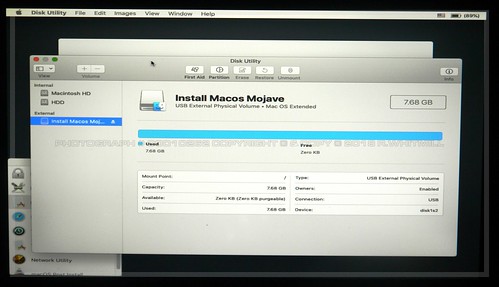

- #Kext utility mojave how to
- #Kext utility mojave install
- #Kext utility mojave code
- #Kext utility mojave free
- #Kext utility mojave mac
Also note that you cannot sign Windows applications with the Apple developer certificate (this time you do need a third-party Comodo etc certificate).Ī macOS application distributed outside the Mac App Store will generally have 3–4 separate layers of signing: It is not possible to use certificates from third-party providers like Comodo because they will not pass Gatekeeper which requires an Apple developer issued certificate.
#Kext utility mojave install
#Kext utility mojave free
The basic steps to sign an application that has been written with Lazarus and/or Free Pascal are: Overview of code-signing a program written with Lazarus and Free Pascal
#Kext utility mojave code
Intel executables being run under Big Sur on an Apple M1 processor via Rosetta 2 can still be run even though they are unsigned using the control-click or right-click method to bypass Gatekeeper.įor more details, see: Big Sur changes for developers: Code signing - Intel vs M1. When Big Sur is running on an Apple M1 (ARM64) processor, all native ARM64 code must be signed or the operating system prevents its execution and this new Gatekeeper requirement cannot be bypassed. This method of bypassing Gatekeeper still works in macOS Catalina, except that on Catalina you need to launch the application a second time with the control-click or right-click to successfully bypass Gatekeeper - the first time you launch the application Gatekeeper cannot be bypassed whether you control-click or right-click or not. This still triggered the alert dialog but it now contained an Open button to successfully launch the application. The better, as in more secure, alternative was to instead bypass Gatekeeper by opening the application from the right-click context menu or by control clicking on the application. Which still works up to and including macOS Catalina. However, you can restore the missing Gatekeeper Anywhere' option in Preferences by opening a terminal and executing the command: When macOS Sierra was released in 2016, Apple made some important changes to Gatekeeper and limited the the Gatekeeper options to: The default setting only allowed the launching of applications from the App Store or from a developer who had signed their application with an Apple-issued certificate. The original Gatekeeper options introduced in Mountain Lion, accessed from Preferences > Security and Privacy > General, were:īy choosing the Anywhere option, the user was once able to entirely disable Gatekeeper. It does not perform any safety checks by itself, other than that the application wasn't changed since the developer signed it, nor does it offer any guarantees about the developer other than that they are paying Apple $US 99 per year (aka an "Identified Developer"). Gatekeeper checks applications against the list of apps that Apple has approved for its App Store or have been code signed by developers who have Apple-issued certificates where the application is not offered through the app store. Gatekeeper, first introduced in Mountain Lion (10.8, 2012), is a Mac security feature that was designed to protect Apple computers from malicious software. This functionality is performed by Apple's Gatekeeper software.

On macOS 10.7 and later, it enables programs downloaded from the Internet to be opened without any warnings (if they are signed with an Apple-issued certificate) and it is required when using certain functionality (eg APIs used by debuggers note that in this case a self-signed certificate that is marked as "trusted" suffices). The discussion below applies equally to App Store distribution and distribution outside the App Store.Ĭode signing is required in iOS.
#Kext utility mojave how to
12 How to check what certificates are installedĬode signing ensures both authenticity and integrity of executables that have been downloaded from wide area networks like the Internet.11.1 Using the Keychain Access application.11 How to install certificates on a second computer.8 Using codesign to sign your disk image.7 Using productsign to sign your pkg installer.6 Using codesign to sign your application.2.1 Big Sur on Apple M1 ARM64 processors.


 0 kommentar(er)
0 kommentar(er)
